Elias B. Wallick- 126th Ohio Infantry, Co. E
Rank: Private
Family Lineage
Place of enlistment: Tuscarawas County, Strasburg, Ohio
Mustered into federal service: September 4, 1862
Service Time: 2 years, 1 month, 2 days
Born: Aug 13, 1838 - Tuscarawas County, Ohio
Age at enlistment: 23
Height: 5' 7" light hair, dark eyes
Civilian occupation: Farmer
Elias, son of George Jr, son of George Sr, son of Johannes, son of Hans Michael and Esther Wallick.
There is little known about Elias B. Wallick’s all-too-short life except for his service record during the Civil War and a little bit of family history. Elias’ grandfather, George Sr, came to Ohio in 1816 from Cumberland County, Pennsylvania, and it was said at the time he was a cousin to “Bunker Hill" Michael. The evidence does strongly suggests that Elias' great-grandfather, Johannes (John), and “Bedford" Michael were brothers.
Elias’ father, George Jr, was a farmer near Strasburg, Ohio, in 1862. We can assume that Elias, being 22 years old, saw the war as a great opportunity to not only demonstrate his patriotism but also escape from his farming responsibilities for three years and embark on an adventure of a lifetime, at the government’s expense. Such feelings were not uncommon with Elias’ generation. Also, the $100 bounty offered to new recruits could have been a motivating factor in Elias’ decision to leave home and march with his new comrades-in-arms. Whatever the reasons, Elias enlisted on Aug 21, 1862, and became a member of a regiment that saw some of the ugliest fighting of the Civil War. There are some Wallick soldiers who never did "see the elephant" at anytime during their service (the elephant being a euphemism for seeing battle, or taking part in "the big show"). However, there are others, like Elias, who we know were in battle because their regimental histories tell of many violent engagements and Elias, himself, is mortally wounded in battle.
The 126th Regiment was part of General Grant’s 1864 Overland Campaign that fought four major battles within six weeks. The battles of the Wilderness, Spotsylvania Courthouse (where the 126th participated in "The Bloody Angle” assault), North Anna River and Cold Harbor were part of the bloodiest campaign of the war. The summer engagements too, especially the Battle at Monocacy Junction, saw many casualties in Elias' regiment and all the soldiers were by then feeling the strain of continuous combat. Elias was fortunate to have survived those horrific battles of late spring and early summer, 1864. However, his good fortune came to a tragic end on September 19th at the Battle of Opequon Creek (3rd Winchester to the Southerners) where he was severely wounded and died four days later.
Grandview Cemetery, Strasburg, Ohio
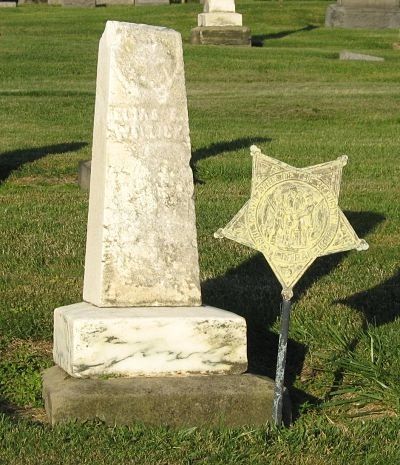 There is a small monument to Elias next to his father’s headstone in the Grandview Cemetery at Strasburg, Ohio, but Elias is not buried there. The army only paid to have officers' remains shipped home during the war and Private Elias’ family probably could not afford to have his body returned. It is obvious that the family wished Elias to be buried next to his father in his hometown for they provided a burial plot and a monument to him. The truth is that Elias is buried at the Winchester National Cemetery in northern Virginia- a fitting place of honor for his sacrifice in the service of his country.
There is a small monument to Elias next to his father’s headstone in the Grandview Cemetery at Strasburg, Ohio, but Elias is not buried there. The army only paid to have officers' remains shipped home during the war and Private Elias’ family probably could not afford to have his body returned. It is obvious that the family wished Elias to be buried next to his father in his hometown for they provided a burial plot and a monument to him. The truth is that Elias is buried at the Winchester National Cemetery in northern Virginia- a fitting place of honor for his sacrifice in the service of his country.
Elias Wallick with the 126th Ohio Volunteer Infantry
1862
AUG 21 Elias enlists at Strasburg, Ohio, and join men from Tuscarawas County who become Company E of the 126th Ohio Volunteer Infantry Regiment.
SEP 4 The 126th Infantry is organized at Camp Steubenville, Ohio, and mustered into Federal service.
OCT 17 The regiment moves to Parkersburg WV, then on to Cumberland, MD.
DEC – JUN 1863 Elias and his comrades perform guard duty on the Baltimore & Ohio Railroad at Martinsburg, VA. Typhoid fever and smallpox wreak havoc in the ranks over the winter of 1863, killing on average of six men out of every company. Many of the men who partially recover are rendered unfit for further service and discharged.
1863
JUL Elias and the 126th pursue General Lee to Manassas Gap and sees action at Wapping Heights.
AUG – SEP 15 Elias and his regiment patrol New York City streets after martial law is declared as a result of the summer draft riots.
OCT – NOV The regiment sees action in the Bristoe Champaign and Brandy Station on Nov 8th. They advance to the line of the Rappahannock River.
DEC – APR, 1864 The regiment is in winter quarters in preparation for General Grant’s spring offensive.
1864
MAY 5 – 7 Battle of the Wilderness. The 126th is engaged with the enemy on the extreme right flank of the Union line at the end of the first day's battle. On the second day, May 6, they are forced to retreat when Confederate General John B. Gordon initiates a fierce counterattack late in the afternoon. The 126th is in the heat of the battle and sustains many casualties. The following is an account written by Francis Cordrey of Company E (Elias’s company) and what he saw at "The Battle of the Wilderness":
"The sun had veiled his face beneath the horizon as if refusing to longer witness the bloody scene. Darkness had gathered around us and the rebels in our midst. Flames issued from guns like many flashes of lightning and the roar of musketry was like that of thunder. Shrieks and groans of the wounded and dying at our feet told that the destruction of the line was appalling. Blue and gray lay side by side and their blood flowed into the same pool while blue and gray stood over them with ball and bayonet, adding more crimson to the pool and often mistaking friend for foe in the dark. Our regiment, consisting of about four hundred men on the field that day, lost 230 killed and wounded."
This trail leads to where Elias fought at the Battle of the Wilderness. The rifle pits that were dug by his regiment are still visible today. Confederate General Gordon made his late day attack at the point where Elias and his regiment were positioned. 
These rifle pits were dug and used by Elias and his regiment at the Wilderness.
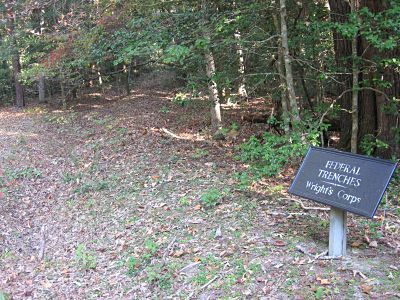
MAY 10 – 12 Battle of Spotsylvania Courthouse and the Assault at “The Bloody Angle”. This battle witnessed the longest sustained and most dreadful hand to hand combat of the entire Civil War. The 126th Ohio was within 100 yards of the Confederate breastworks before it had to withdraw with heavy losses. The following is a detailed description of what Elias must have witnessed during that awful day. Captain John E. Peck of the 126th, from Jewett, Ohio, describes the carnage:
“On the 12th, desperate fighting began on the left of the line at 5 o’clock in the morning by General Hancock, who had transferred his corps from the right to the left the evening before. The struggle was fierce and terrific all day in order to get possession of an elevated position held by the rebels for the purpose of using artillery. The roar of the musketry was awful as volley after volley was hurled back and forth and the terrific noise of the artillery was beyond anything before experienced. All day long and far into the night the struggle raged with unceasing fury. If there was a lull in the storm of battle it only proved to be a breathing spell, preparatory to a more desperate onset.
At about 11 o’clock that day the 126th Ohio with its division was ordered to the left of the line where both armies appeared to be concentrating. After arriving and forming a line of battle, the regiment was detached from its brigade and sent past several lines of battle to the front line, within 100 yards of the enemy breastworks at what was known as “The Bloody Angle”- so called from the sanguinary struggle that took place at the salient in the rebel works - and formed a line of battle while the rebels were pouring volley after volley and thinning the ranks.
Having no protection save a few pine, six or eight inches in diameter, the men lay down. They loaded lying; then rising to their knees, took deliberate aim at the heads of the rebels above the parapet and fired. Although the men were being stricken down at a fearful rate, they were cool and calm and kept up such a constant fire on the rebels as to nearly stop theirs at times, as it was almost sure death for them to show their heads. There was no standing up and cheering or yelling, except by a few individuals and they were soon hushed in death, as they were targets for the enemy. The men were inspired with more than usual fearlessness and firmly held their position until each man had exhausted fifty rounds of ammunition and then he took cartridges from the boxes of their slain comrades in order to keep up the fire. This was continued for nearly two hours and when the rebels discovered that the firing had ceased, they came out of their rifle pits and began advancing toward the regiment. The men of the 126th fixed bayonets and held the ground for a short time and only fell back in the rear of the next line of battle when in imminent danger of being annihilated. Now the regiment was very small, only a remnant, not enough for a company of minimum size…"
This field is where the 126th Regiment attacked the fortified Confederate positions at "The Bloody Angle". The monument to the left is dedicated to the men of the 126th Ohio who fought in that battle and it lists the names of the fallen heros.
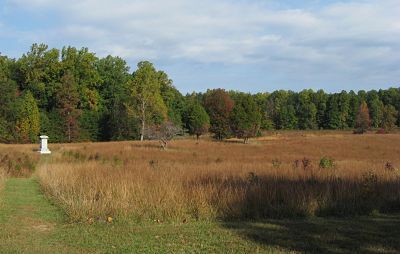
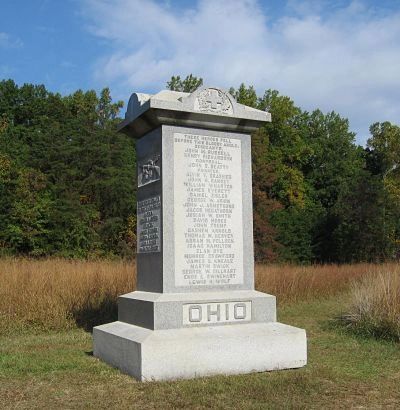
Monument to the 126th Ohio Infantry
at "The Bloody Angle"
MAY 23 – 26 North Anna River The regiment sees little, if any action here.
JUN 1 - 3 The Assaults at Cold Harbor. The 126th Ohio Infantry makes two assaults at Cold Harbor over a period of three days. In its last assault, June 3rd, General Grant orders what he later described as one of the biggest mistakes he made during the war. He issues a command for a frontal attack on the entrenched Confederate positions at Cold Harbor, resulting in 7,000 Union casualties in less than an hour. Some estimates have put the casualty figure occurring within the first fifteen minutes. General Grant says of this battle in his memoirs "I have always regretted that the last assault at Cold Harbor was ever made. At Cold Harbor no advantage whatever was gained to compensate for the heavy loss we sustained." Elias is able to survive Grant’s Overland Champaign of 1864. National Archive records show Elias present for duty and list no wounds received, however, not all wounds were recorded. This series of battles has the worst casualty rates for any single campaign of the war.
Union Casualties Only
Wilderness May 5-7 18,791
Spotsylvania May 10 -12 18,000 approx.
North Anna May 23-26 2,100
Cold Harbor June 1-3 12,737
These rifle pits at Cold Harbor National Military Park were occupied by Confederate troops. Union soldiers charged toward the camera, across what was then open ground and into these well entrenched Confederate positions on the morning of June 3, 1864. This sector is where Elias and his brigade were deployed during the disastrous assault.
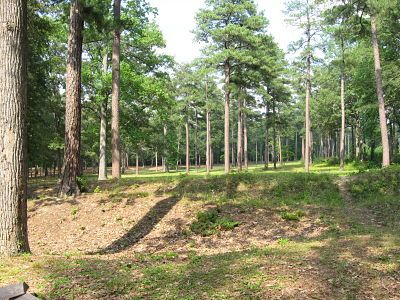
JUN 18 – JUL 6 Attack on Petersburg The Union Army attacks and begins its nine-month siege at Petersburg, VA. Elias is at the exterme northern flank of the Union trenches at the beginning of the siege.
JUL 9 Battle of Monocacy Junction. Elias is detached from Petersburg and quickly moved up to Maryland to help thwart the planned attack on Washington D.C. by Confederate General Jubal Early. The opposing Union commander is General Lew Wallace, future author of the biblical epic novel, Ben Hur. The day is stifling hot. The regiment is in the center of the Union lines, near Thomas House, and counters two fierce Confederate attacks before they must retreat; their courage being unable to offset the superior numbers of the Rebels. The 126th has taken heavy casualties this day.
The 126th Ohio charged toward the horizon on this field at the Battle of Monocacy Junction. This portion of the battlefield is located at the intersection of Baker Valley Rd. and Araby Church Road, just off Urbana Pike-Route 355.

In this picture Elias's regiment moved from right to left, through the fields of the Thomas Farm, where they engaged the Confederate forces. His regiment was part of the first reinforcements to arrive from Petersburg, VA. They were unloaded from the troop trains and immediately sent into battle.

Although a tactical defeat, it is a strategic victory. This battle delays the Confederates long enough to allow Federal reinforcements to mobilize and come to the aid of Washington D.C. On July 12th, General Early's attack on Washington is easily repulsed. This is the only serious threat to our nation's capital during the war.
AUG 1 The 126th is attached to General Sheridan’s Shenandoah Valley Champaign.
SEP 19 Battle of Opequon Creek- Elias is mortally wounded.
Excerpt from the National Parks Service Study Team of the Shenandoah Valley Campaign:
Overview of the Battle. Opequon Creek, or Third Winchester, is the largest and most desperately contested battle of the Civil War in the Shenandoah Valley, resulting in more than 9,000 casualties. The battle is the turning point of the war in the Valley, marking the rise of Sheridan and the decline of Confederate power. Sheridan defeats the Confederate army again three days later at Fisher's Hill (September 22), forcing it to retreat up the Valley to near Waynesboro, VA. The Confederate Army of Lt. Gen. Jubal A. Early suffers about a 23 percent casualty rate. Casualties for the larger Union Army under Maj. Gen. Philip Sheridan exceeded 5,000, nearly 20 percent.
Mistakes are made at the Battle of Opequon
At 1 a.m. on September 19, the morning call rang throughout the Army of the Shenandoah. By 4:30 a.m., the Union army encountered its first major hurdle of the day. After crossing Opequon Creek, the Berryville Road passes through the two-mile narrow Berryville Canyon. General Horatio Wright’s Sixth Corps (Elias’s Corps) encounters heavy resistance when it finally exits the canyon. Additionally, Wright has ordered the slow-moving wagon trains and ambulances to accompany the soldiers into the canyon. Soon, the narrow canyon becomes clogged with infantrymen pushing forward, wagon trains laden with supplies, and the wounded filtering back to makeshift hospitals. General William Emory, leading the Nineteenth Corp, incensed by Wright’s incompetence, ignores Wright’s orders and directs his men to circumvent the wagons. Soldiers of the Nineteenth Corps climb along the sides of the hills and trample over the wounded, seriously affecting their morale before even seeing the enemy and delaying their arrival on the field. Confederate General Early later wrote about the battle, “When I look back to the battle, I can but attribute my escape from utter annihilation to the incompetence of my opponent.” General Sheridan’s attempt to squeeze 20,000 troops through the narrow canyon is a tactical blunder that eliminates any possibility of destroying General Early in detail.
Today Berryville Canyon is much wider than the narrow road Elias and his corps had to maneuver through on the morning of September 19, 1864. After exiting the canyon, his regiment was placed in line of battle and it was there, at the Battle of Opequon Creek, where he was mortally wounded.
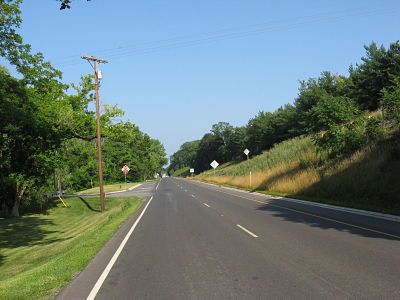
General Wright’s Corps of three divisions- Getty, Ricketts (Elias’s division) and Russell - emerge from the canyon in order. Getty’s division is deployed south of the Berryville pike with its left flank resting on Abrams Creek. Rickett’s division is formed north of the pike on Getty’s right and is extended to Redbud Run. Russell’s division is held in reserve.
As Elias and the 126th emerge from Berryville Canyon they form a line of battle and become painfully aware of the daunting task before them. The regiment must charge across open ground, then march uphill into the face of Confederate guns that are placed on the crest of the ridge. There are very high casualties and this could be when Elias is mortally wounded.
In tandem with the charge of the Nineteenth Corps, the Sixth Corps (Elias’s corps) advances, but the left flank of the Nineteenth crumbles under the pressure. During the Union advance however, a gap develops between the two corps. Confederate General Rodes launches a counterattack into the gap. After shouting, “Charge them boys! Charge them!” Gen. Rodes is killed instantly from an exploding shell. A valiant countercharge by Union General Upton brakes Rodes’s division. General Wright would later refer to Upton’s charge as “the turning point of the conflict.
Distant cousin Edward Wallick is also at the Battle of Opequon. He is deployed just to the north of Elias, fords Red Bud Creek around 3:00 PM and becomes engaged in battle. Edward's regiment is part of the final thrust into the northern Confederate flank that will eventually break the Rebels. The Johnnys will retreat through Winchester, giving General Sheridan a great victory.
This is the site of Elias B Wallick's last deployment, just east of Winchester, VA. and north of the Berryville Pike. His regiment would have marched up this ridge.
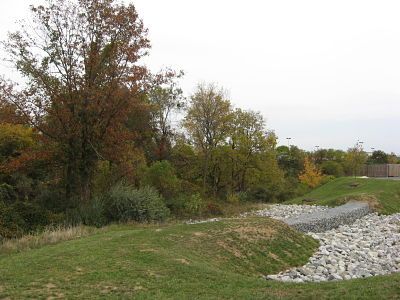
SEP 23 Elias dies of his wounds. The Battle of Opequon Creek also claims the life of Confederate Colonel George S. Patton, namesake and grandfather of the famous WWII U.S. Third Army general.
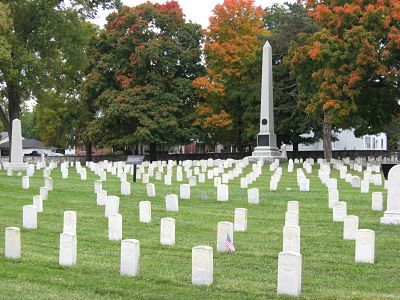
Winchester National Cemetery, Winchester, Virginia.
Elias B. Wallick is buried in the second row with the American flag.
Location: Section 12, Site 327
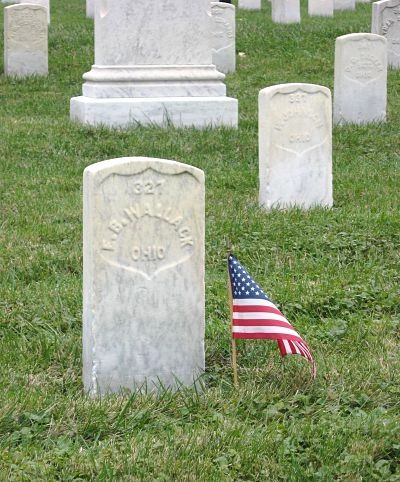
The alternate spelling Wallack is common with Wallick soldiers during the war. The death date of this soldier and supporting evidence from the Official Roster of Soldiers from the State of Ohio in the War of the Rebellion (1886), confirms that he is Elias B. Wallick.
Comrades-in-Arms
None- No brothers or 1st cousins
Song- Green Shenandoah
This song was chosen for Elias because he is the only Wallick soldier who was killed and now lies buried in the Shenandoah Valley. He died just a few miles away from his final resting place. In Green Shenandoah, a young woman sings of her fallen soldier and lover:
Composer's note- Shenan-do-ah is to be sung Shenan-doe.
Green Shenandoah- vs. 1
The fierce din of battle is now hush'd to rest,
Yet sad is the sorrow that preys on my breast,
For wild winds are sighing o'er wavelets that flow,
Where my lost love is lying, In Green Shenandoah.
Chorus
The sweet joys I dream'd of, I never shall know,
For my heart's in his grave, In Green Shenandoah.
Return to Top
Return to
Wallick Family Website
